The Whiskered Screech Owl, scientifically known as Megascops trichopsis, is a captivating species of owl inhabiting the wooded regions of western Mexico and parts of Central America.
Renowned for its distinctive facial features, characterized by prominent ear tufts and delicate whisker-like feathers around its facial disk, this small-sized owl stands out among its nocturnal counterparts.
With a height of approximately 20 cm (8 inches), the Whiskered Screech Owl displays a remarkable blend of reddish-brown and gray plumage, offering effective camouflage amidst the dense foliage it calls home.
Despite its diminutive stature, this owl is known for its powerful, resonant hooting calls that echo through the night, contributing to the symphony of sounds in its woodland habitat.
As a predominantly insectivorous species, it plays a vital role in maintaining ecological balance while captivating the admiration of bird enthusiasts and researchers alike with its enigmatic presence.
How to Identify Whiskered Screech Owl
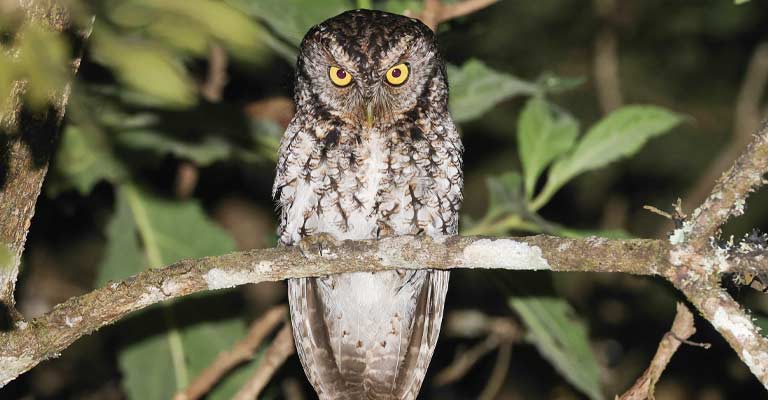
Identifying the Whiskered Screech Owl (Megascops trichopsis) can be an exciting and rewarding experience for birdwatchers, given its unique features and distinctive characteristics.
Here are eight key points to help enthusiasts accurately recognize this captivating owl species:
Size and Structure
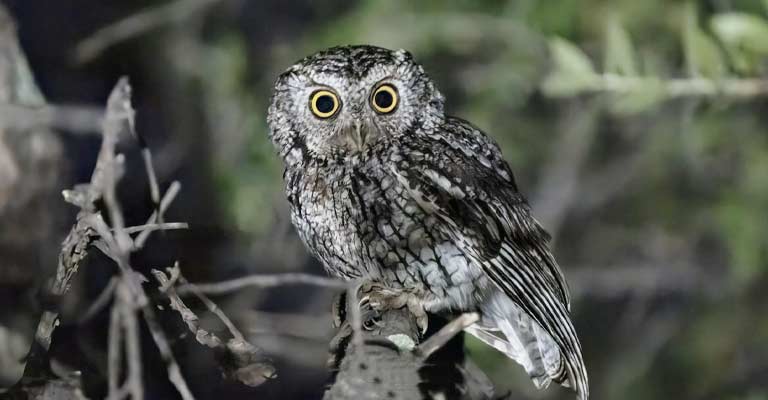
The Whiskered Screech Owl is relatively small, measuring around 20 cm (8 inches) in height. Its compact size, coupled with a rounded head and short tail, distinguishes it from larger owl species.
Despite its diminutive stature, this bird possesses a robust build, reflecting its adaptability to a variety of wooded habitats.
Coloration and Plumage
The owl’s plumage serves as a significant identifying factor. The Whiskered Screech Owl typically displays a mix of reddish-brown and gray feathers, providing effective camouflage amidst the tree bark and foliage of its woodland home.
The mottled pattern on its plumage aids in blending seamlessly with the environment, making it challenging to spot during daylight hours.
Facial Features
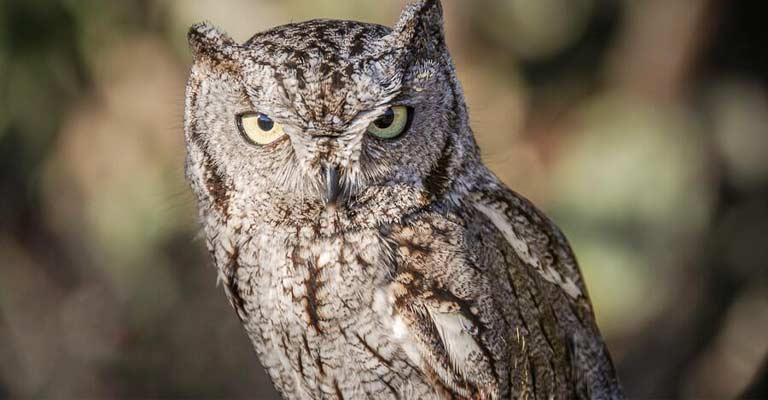
One of the most distinctive features of the Whiskered Screech Owl is its facial appearance. Prominent ear tufts, characteristic of many owl species, adorn its head.
Additionally, delicate whisker-like feathers surround its facial disk, contributing to its unique charm and earning it the “whiskered” moniker.
Eye Color
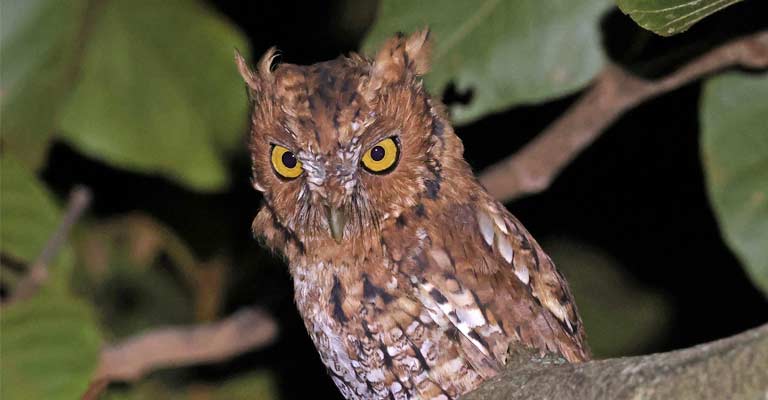
Observing the eye color is crucial for identification. The Whiskered Screech Owl typically possesses yellow or amber-colored eyes.
The vividness of the eye color, coupled with the surrounding facial features, enhances its overall striking appearance.
Nocturnal Behavior
Being primarily nocturnal, the Whiskered Screech Owl is most active during the night. Listen for its distinctive hooting calls, which are often characterized by a series of rhythmic and resonant notes.
Familiarizing yourself with its vocalizations can significantly aid in identifying its presence in the area.
Behavioral Traits
Pay attention to the bird’s behavior. The Whiskered Screech Owl is known for its elusive nature, relying on its camouflaging plumage and stealthy movements to evade detection.
Observing its hunting patterns and roosting locations can offer additional clues for accurate identification.
Identifying the Whiskered Screech Owl requires a combination of visual and auditory observations, taking into account its size, plumage, facial features, eye color, habitat, behavior, and geographical distribution.
By incorporating these key points into your birdwatching repertoire, you can enhance your chances of successfully recognizing and appreciating this fascinating owl species in its natural environment.
Taxonomy of Whiskered Screech Owl
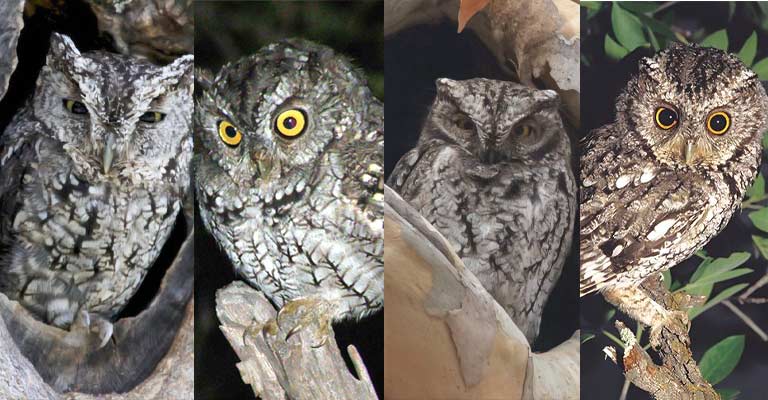
Here is a table summarizing the taxonomy details of the Whiskered Screech Owl (Megascops trichopsis):
| Taxonomic Level | Classification |
| Domain | Eukaryota |
| Kingdom | Animalia |
| Phylum | Chordata |
| Class | Aves |
| Order | Strigiformes |
| Family | Strigidae |
| Genus | Megascops |
| Species | M. trichopsis |
This table outlines the hierarchical classification of the Whiskered Screech Owl, from the broad domain level down to the specific species.
Each taxonomic level represents a progressively more detailed categorization, providing a systematic framework for understanding the bird’s biological classification.
The Whiskered Screech Owl (Megascops trichopsis) exhibits intriguing variations across different subspecies, each contributing to the rich biodiversity within its range. Let’s delve into the characteristics of the three subspecies mentioned:
Megascops trichopsis aspersus (Brewster, 1888)
A distinctive subspecies of the Whiskered Screech Owl, M. t. aspersus, showcases regional variations in plumage.
Found in specific areas, its unique coloration adds diversity to the overall population, highlighting the adaptability of this species to different environments.
Megascops trichopsis mesamericanus (Van Rossem, 1932)
- t. mesamericanus, another intriguing subspecies, reveals subtle differences in its distribution and possibly its vocalizations.
Endemic to specific regions, its localized traits contribute to the overall biodiversity and evolutionary history of the Whiskered Screech Owl species.
Megascops trichopsis trichopsis (Wagler, 1832)
The nominate subspecies, M. t. trichopsis, represents the broader characteristics of the Whiskered Screech Owl. With its reddish-brown and gray plumage, it serves as the archetype for the species.
Its distribution spans western Mexico and Central America, offering insights into the owl’s core traits and behavior.
Studying such variations not only enhances our understanding of the species but also underscores the importance of preserving the diverse ecosystems that support these unique owl populations.
Whiskered Screech-Owl Life History
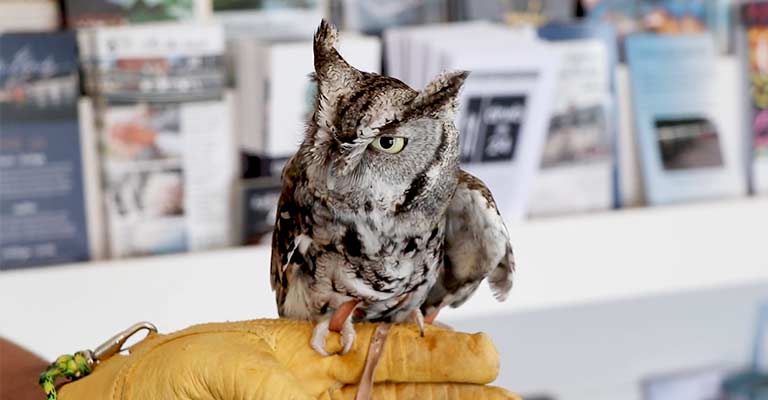
The Whiskered Screech Owl (Megascops trichopsis) is a fascinating and enigmatic species, distinguished by its diminutive size and unique facial features.
Exploring the life history of these nocturnal raptors unveils a tapestry of survival strategies, reproductive behaviors, and ecological adaptations.
From their dietary preferences to nesting habits, breeding rituals, and the challenges they face, understanding the life history of the Whiskered Screech Owl provides insights into the delicate balance these birds maintain in their natural environment.
Food
Whiskered Screech Owls are primarily insectivores, relying on a diet of insects such as beetles, moths, and crickets. Their nocturnal nature facilitates hunting during the night, using keen eyesight and acute hearing to locate prey.
Additionally, small mammals and occasionally small birds may supplement their diet. This dietary flexibility allows them to adapt to the varying availability of prey within their woodland habitats.
Habitat
These owls inhabit a diverse range of wooded environments, including tropical and subtropical forests, deciduous woodlands, and mixed forests.
They are often found roosting in tree cavities or dense foliage during the day, utilizing their cryptic plumage to remain inconspicuous.
The Whiskered Screech Owl’s choice of habitat reflects its ability to thrive in different ecosystems across western Mexico and parts of Central America.
Range Map
The range of the Whiskered Screech Owl extends through western Mexico, with populations also identified in specific areas of Guatemala, Honduras, and El Salvador.
Range maps offer valuable insights into their distribution, aiding conservation efforts by identifying key regions for protection and management.
Nesting
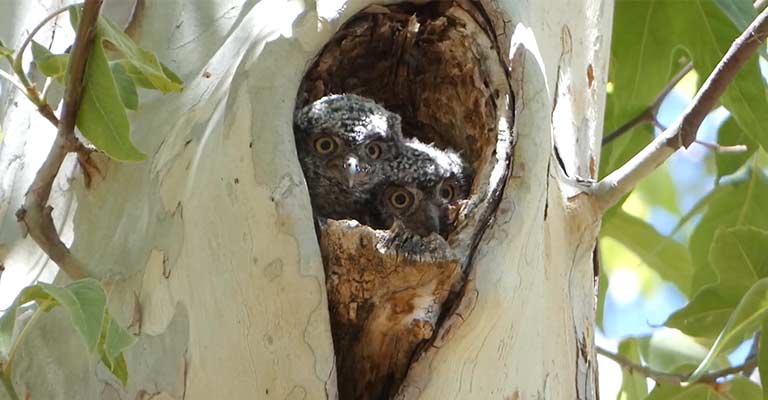
During the breeding season, Whiskered Screech Owls engage in elaborate courtship displays. They commonly nest in tree cavities, utilizing natural hollows or those created by woodpeckers.
The female typically lays a clutch of eggs, and both parents share incubation duties. The nesting site is carefully chosen for concealment and protection, ensuring the safety of the vulnerable chicks.
Here’s a table summarizing the nesting details of the Whiskered Screech Owl (Megascops trichopsis):
| Nesting Details | Facts |
| Clutch Size | Typically 2 to 4 eggs |
| Number of Broods | Usually 1 to 2 broods per breeding season |
| Egg Length | Approximately 3.0 cm (1.2 inches) |
| Egg Width | Approximately 2.5 cm (1.0 inch) |
| Incubation Period | Around 25 to 28 days |
| Nestling Period | Approximately 22 to 30 days |
| Egg Description | White or pale with a smooth texture |
| Nesting Site | Tree cavities, often utilizing woodpecker-created hollows or natural hollows |
| Parental Involvement | Both males and females contribute to the incubation and care of the young |
| Parental Care | Both parents actively participate in feeding and protecting the nestlings |
| Fledgling Independence | Young owls become independent after the nestling period, usually around 30 days |
Breeding
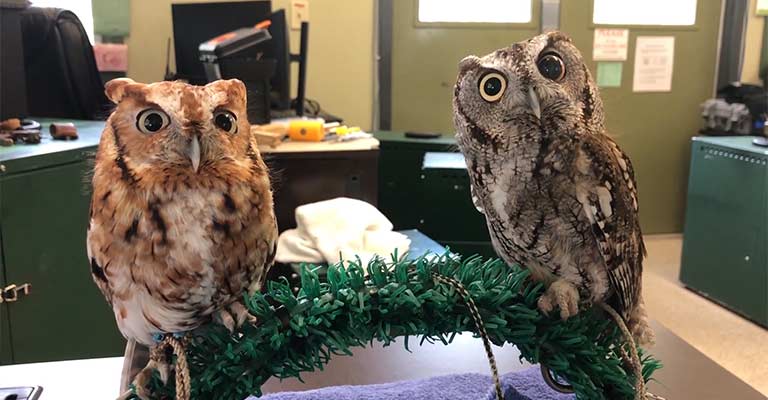
Breeding activities are often synchronized with the availability of food resources. Male Whiskered Screech Owls employ vocalizations and visual displays to attract mates.
After a successful courtship, the pair collaborates on nest-building and parenting duties. The fledglings are cared for by both parents until they become independent, marking the completion of a reproductive cycle.
Treatment and Diseases
While the Whiskered Screech Owl does face threats from predators, parasites, and habitat loss, specific diseases affecting this species are not extensively documented.
However, general avian health concerns such as avian malaria and respiratory infections may impact owl populations.
Conservation efforts often include monitoring for signs of disease and implementing measures to mitigate potential outbreaks.
Conservation
Conservation initiatives for the Whiskered Screech Owl focus on preserving its natural habitat, addressing the impacts of deforestation, and raising awareness about the importance of these birds in maintaining ecosystem balance.
Understanding their ecological role and implementing sustainable forestry practices are crucial steps in ensuring the long-term survival of this captivating owl species.
The life history of the Whiskered Screech Owl unveils a captivating narrative of adaptation, survival, and reproduction in the intricate tapestry of their wooded habitats.
Studying and safeguarding these aspects are essential for the sustained existence of this unique and ecologically significant avian species.
Whiskered Screech-Owl Common Habits
The Whiskered Screech Owl (Megascops trichopsis) exhibits a range of common habits that contribute to its survival, reproductive success, and overall behavior.
Understanding these habits provides valuable insights into the ecology and lifestyle of this intriguing owl species:
Nocturnal Activity
The Whiskered Screech-Owl is primarily nocturnal, meaning it is most active during the night. This behavioral adaptation allows it to exploit the darkness for hunting and avoid potential diurnal predators.
Camouflage and Roosting
During daylight hours, these owls utilize their cryptic plumage and feather patterns for effective camouflage, often roosting in tree cavities, dense foliage, or other concealed locations to avoid detection.
Hunting Techniques
Whiskered Screech Owls are skilled hunters, relying on their keen eyesight and exceptional hearing to locate prey in the darkness. They typically hunt a variety of insects, small mammals, and occasionally small birds.
Vocalizations
The owls communicate through a series of distinctive hooting calls. These vocalizations serve multiple purposes, including territory marking, courtship displays, and communication between mating pairs.
Territorial Behavior
Whiskered Screech Owls are known to be territorial, defending their nesting sites and hunting grounds against potential intruders. Territorial calls and displays are common during the breeding season.
Courtship Rituals
During the breeding season, males engage in elaborate courtship rituals to attract females. These rituals may include vocalizations, visual displays, and the presentation of food offerings.
Parental Care
Both male and female Whiskered Screech Owls actively participate in parenting duties. This includes incubation of eggs, feeding the nestlings, and protecting the offspring until they become independent.
Seasonal Migration
While not known for long-distance migrations, there may be seasonal movements within their range in response to changes in prey availability or environmental conditions.
Adaptation to Various Habitats
Whiskered Screech Owls are adaptable to a variety of wooded habitats, including tropical and subtropical forests, deciduous woodlands, and mixed forests.
Their ability to thrive in diverse environments contributes to their widespread distribution.
Silent Flight
Like many owl species, Whiskered Screech Owls have specialized feathers that help reduce noise during flight. This adaptation aids them in approaching prey silently.
Understanding these common habits sheds light on the behavioral ecology of the Whiskered Screech Owl, highlighting its strategies for survival, reproduction, and successful coexistence within its natural environment.
Wrapping Up
The Whiskered Screech Owl, with its nocturnal prowess, intricate nesting behaviors, and adaptable lifestyle, exemplifies the delicate balance of nature.
From its cryptic plumage and territorial calls to the collaborative efforts in parenting, these owls contribute significantly to the ecosystems they inhabit.
As guardians of wooded habitats in western Mexico and parts of Central America, their habits underscore the interconnectedness of wildlife and the importance of conservation efforts.
Studying the Whiskered Screech Owl’s common habits not only unveils the mysteries of its existence but also emphasizes the need to protect the diverse environments that support these captivating avian species.